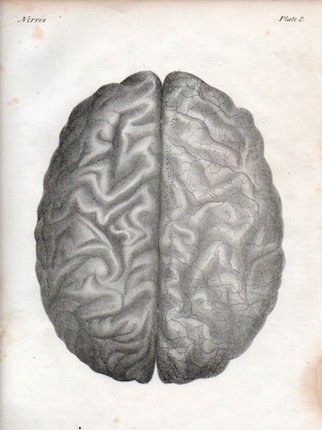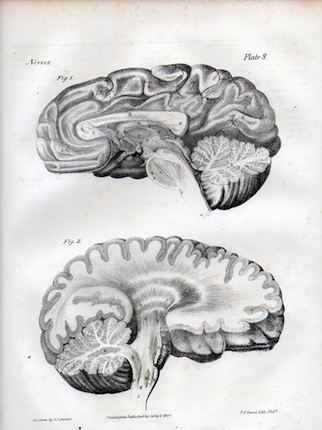This post originally appeared back in February 2011. If you’ve already read it, we apologize. Cassie is frantically packing in preparation for a cross-country move.
 January 3rd was a bad day for Cee. That morning she had a colonoscopy. The procedure went smoothly. But afterward, Cee felt ill. Something wasn’t right. She had a bite to eat, poured a glass of milk, and told her husband she was going to lie down. She set the milk on her nightstand. Then she collapsed.
January 3rd was a bad day for Cee. That morning she had a colonoscopy. The procedure went smoothly. But afterward, Cee felt ill. Something wasn’t right. She had a bite to eat, poured a glass of milk, and told her husband she was going to lie down. She set the milk on her nightstand. Then she collapsed.
At the hospital, doctors determined Cee was having a stroke. They found a clot blocking a major artery in the left side of her brain, so they gave her a clot-busting drug called tPA and airlifted her to the stroke center at Swedish Medical Center in Denver. By the time she arrived at Swedish, the clot was gone — a good sign, the doctors said.
The left side of the brain controls the right side of the body. Cee was awake, but her entire right side was paralyzed. She couldn’t speak, nor was she responding to simple commands. But when she saw her husband and daughter, she smiled and started to cry. Over the next couple of days, Cee improved. She said a few simple words, like “hi” and “light,” and she began moving her right leg. Her right arm, however, remained motionless. An MRI showed severe damage to left side of Cee’s brain, mainly the regions that control speech and language, but also the motor cortex. Her physician was not optimistic. He doubted she’d regain the use of her arm, or be able to return to work. Cee had been a go-getter in a fast-paced career. But now Cee would be lucky to function as a housewife, the doctor told her family.
Over the next couple of days, Cee improved. She said a few simple words, like “hi” and “light,” and she began moving her right leg. Her right arm, however, remained motionless. An MRI showed severe damage to left side of Cee’s brain, mainly the regions that control speech and language, but also the motor cortex. Her physician was not optimistic. He doubted she’d regain the use of her arm, or be able to return to work. Cee had been a go-getter in a fast-paced career. But now Cee would be lucky to function as a housewife, the doctor told her family.
I have been preoccupied with strokes and stroke recovery ever since January, when Cee, my 57-year-old aunt, collapsed  in her home in Colorado Springs. And, frankly, the grim prognosis her doctor offered royally pissed me off. Certainly recovery — even full recovery — after a stroke is possible. No one who has heard Jill Bolte Taylor’s amazing tale of re-learning how to talk, walk, and think after a blood vessel burst in her brain can doubt that. So why was my aunt’s doctor being such a pessimist? Was he simply trying to prepare us for the worst? Or, more frighteningly, did he actually see something in Cee’s MRI that made him certain she could not bounce back?
in her home in Colorado Springs. And, frankly, the grim prognosis her doctor offered royally pissed me off. Certainly recovery — even full recovery — after a stroke is possible. No one who has heard Jill Bolte Taylor’s amazing tale of re-learning how to talk, walk, and think after a blood vessel burst in her brain can doubt that. So why was my aunt’s doctor being such a pessimist? Was he simply trying to prepare us for the worst? Or, more frighteningly, did he actually see something in Cee’s MRI that made him certain she could not bounce back?
I wanted to find out how the brain recovers after a stroke, and what an MRI can and can’t say about a person’s ability to recover. So last weekend I tracked down neurologist Walter Koroshetz, deputy director of the National Institute of Neurological Disorders and Stroke, at the annual meeting of the American Association for the Advancement of Science in Washington, DC. (One of the perks of being a science writer is having access to top-tier scientists.)
During a normal stroke, a clot cuts off blood flow to part of the brain. (Blood vessels can also burst. But this type of stroke — called a hemorrhagic stroke — is less common.) The tissue deprived of oxygen-rich blood dies. “A hole gets created,” Koroshetz says. The neurons that used to reside in that region are gone. But other neurons can pick up the slack. Say you have a stroke victim like Cee who was left with a paralyzed arm. As that person recovers, he or she may regain the ability to move the arm. If you put that person in a functional MRI machine and ask him or her to move the once-paralyzed limb, large areas of the brain will light up, Koroshetz says. The neurons responsible for moving that arm are gone, but in many cases new neurons will pitch in to get the fingers wiggling.
An MRI can give physicians a sense of how much damage the brain has sustained and what areas are affected, Koroshetz says, but it isn’t necessarily a good predictor of patient recovery. Age, however, does play a big role. “Young people can have amazing recoveries,” he says. “I’ve seen people with half their brains gone, and two years later you can’t tell.” Therapy also has an impact. “If you practice something in this period, it seems to improve your chance of getting better,” he says. Recovery tends to be most pronounced in the first three months after a stroke. By six months, the recovery rate has slowed. But a new study finds that stroke patients’ ability to walk can improve even six months to a year after the stroke.
Cee has been in recovery for nearly two months. Given the severity of her stroke, her progress has been impressive. But she still struggles. Cee can make small talk, but she sometimes forgets words. And coming up with lists of vegetables or flowers — items she could have rattled off before the stroke — takes time and painstaking effort. Cee can say ‘cat’ if you show her a picture of one, but if you ask her to match the word ‘cat’ with the picture, she has trouble.
Not surprisingly, Cee gets frustrated. She remembers how easy things used to be, and she longs for them to be easy again. That’s normal, Koroshetz says. “It’s terribly frustrating not to be able to do something that you used to take for granted.”
Still, small breakthroughs happen. A couple of weeks ago, Cee moved her once-limp right arm, which she nicknamed ‘Ralph.’
http://www.youtube.com/watch?v=t4sT9s4gtbM#t=1
Cee can’t move Ralph much (the grunt at the end should be evidence of how hard she’s working). But it’s enough to give all of us hope.
Maybe Cee won’t fully recover. But then again maybe she will. Neurologists have yet to solve all the brain’s mysteries. And I’d like to believe my aunt is far from the average stroke patient. She is a fighter. And so is Ralph.
UPDATE: My aunt Cee is doing well. Ralph is still much weaker than Cee’s nameless left arm, and she worries that she won’t have the strength to hold her soon-to-be-born grandbaby. But in many other ways she has recovered completely.
**
Brain lithographs courtesy of John Ptak.
More info on strokes at NINDS and the American Stroke Association.
To protect my family’s privacy, I have shortened my aunt’s name to “Cee.”